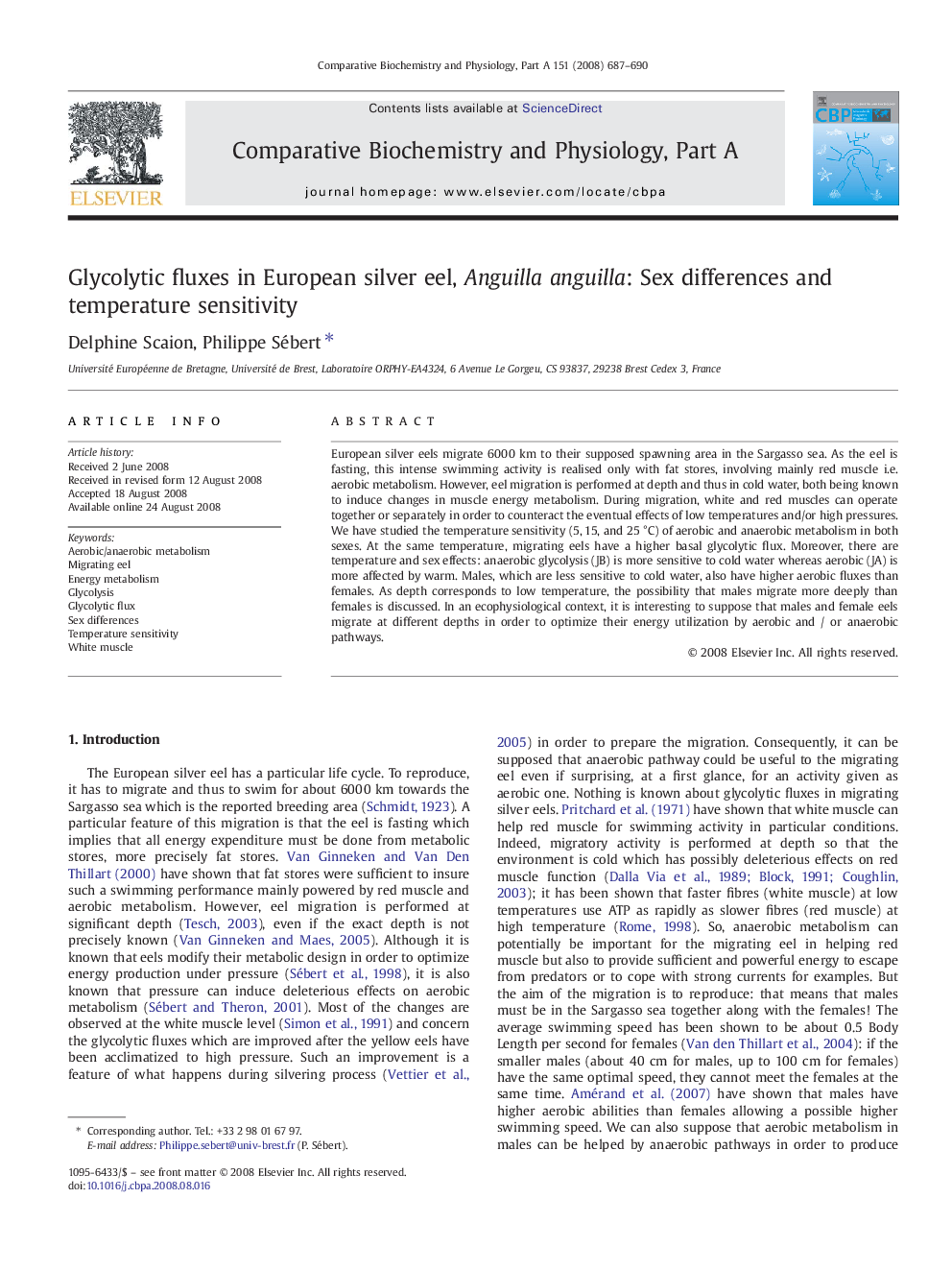| کد مقاله | کد نشریه | سال انتشار | مقاله انگلیسی | نسخه تمام متن |
|---|---|---|---|---|
| 1973406 | 1060315 | 2008 | 4 صفحه PDF | دانلود رایگان |

European silver eels migrate 6000 km to their supposed spawning area in the Sargasso sea. As the eel is fasting, this intense swimming activity is realised only with fat stores, involving mainly red muscle i.e. aerobic metabolism. However, eel migration is performed at depth and thus in cold water, both being known to induce changes in muscle energy metabolism. During migration, white and red muscles can operate together or separately in order to counteract the eventual effects of low temperatures and/or high pressures. We have studied the temperature sensitivity (5, 15, and 25 °C) of aerobic and anaerobic metabolism in both sexes. At the same temperature, migrating eels have a higher basal glycolytic flux. Moreover, there are temperature and sex effects: anaerobic glycolysis (JB) is more sensitive to cold water whereas aerobic (JA) is more affected by warm. Males, which are less sensitive to cold water, also have higher aerobic fluxes than females. As depth corresponds to low temperature, the possibility that males migrate more deeply than females is discussed. In an ecophysiological context, it is interesting to suppose that males and female eels migrate at different depths in order to optimize their energy utilization by aerobic and / or anaerobic pathways.
Journal: Comparative Biochemistry and Physiology Part A: Molecular & Integrative Physiology - Volume 151, Issue 4, December 2008, Pages 687–690